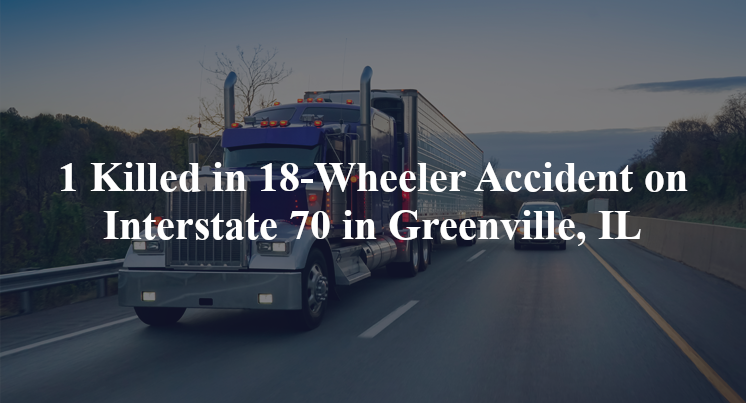1 Killed in 18-Wheeler Accident on Interstate 70 in Greenville, IL
Greenville, IL — June 9, 2025, One person was injured following an 18-wheeler accident that occurred at around 3:00 A.M. on Interstate 70.

According to official reports, a person was being treated in an ambulance from a previous crash on the westbound lanes of Interstate 70, near exit 45, when they exited the ambulance and were struck by an oncoming 18-wheeler.
They were transported to the hospital where they were pronounced deceased, and and at this time their identity has not been released by officials. This remains an ongoing investigation.
Commentary by Attorney Michael Grossman
When someone exits an ambulance on an active interstate and is then struck by an 18-wheeler, it raises difficult questions about how such a sequence of events could occur. The reports confirm the basic facts but don’t yet explain the circumstances that led to the individual leaving the ambulance—and that’s where the focus of any serious investigation needs to be.
Unanswered Questions
This incident happened on the westbound lanes of I-70 near exit 45, and we know the person had been involved in an earlier crash. But what’s not clear is why they exited the ambulance. Did they do so voluntarily? Were they disoriented or attempting to leave against medical advice? Was the ambulance stopped in a safe location, or were there safety lapses in securing the patient?
We also don’t know whether the 18-wheeler had time to react or even saw the person before the collision occurred. That depends heavily on lighting conditions, the truck’s speed, and the visibility of the individual on foot—all of which are currently unaddressed in the public reports.
Evidence That Will Be Crucial
To make sense of this unusual and fatal chain of events, investigators should be reviewing:
- Dash cam footage from the ambulance and the truck, to determine positioning and visibility
- Statements from EMS personnel, especially those inside the ambulance at the time
- Black box (ECM) data from the 18-wheeler, showing speed, braking, and throttle input
- Crash scene photos and measurements, to assess sight lines and stopping distances
- Toxicology and medical records, if impairment or disorientation was a factor in the person exiting the vehicle
In past cases I’ve worked on, similar questions arose when patients unexpectedly left emergency vehicles or scenes. In one situation, protocols weren’t followed to monitor and restrain a confused individual, and that failure led directly to their injury.
Why Procedure Matters
If the ambulance crew failed to secure or monitor the patient, that could raise questions about whether emergency response protocols were followed. On the other side, if the truck driver was speeding or distracted, that may also factor into liability. But until the facts come out, no assumptions can be made about who, if anyone, is at fault.
This kind of incident illustrates how multiple points of failure—not just a single decision—can combine to produce a fatal outcome. Getting to the truth means examining every step leading up to the moment of impact.
Key Takeaways
- The cause of the individual exiting the ambulance is unknown, and that’s central to understanding how the fatal impact occurred.
- It’s unclear whether the truck driver could see or react to the person in time.
- Key evidence includes dash cam footage, ECM data, EMS reports, and crash scene measurements.
- Emergency response protocols and the truck driver’s behavior may both come under scrutiny, depending on what the investigation reveals.
- This incident highlights the importance of examining every link in the chain of events—not just the final impact.

“These are essential reads for anyone dealing with the aftermath of a truck wreck”– Attorney Cory Carlson